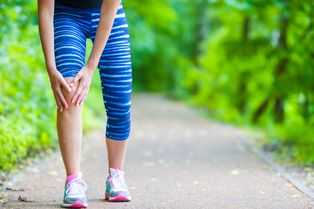
Chondromalacia which is also referred to as chondromalacia patellae or runner’s knee is a condition in which the cartilage found on the underside of the patella (kneecap) worsens and soften. Chondromalacia has been shown to be common among young, individual athletes, but it can also occur in older people with knee arthritis.
Chondromalacia is often perceived as an injury that occurs due to excessive use in sports. Sometimes taking a few free days from training can result in good outcomes. In other cases, Chondromalacia can occur as a result of misalignment of the knee, and taking a simple rest has failed to offer relief. The symptoms of Chondromalacia include knee pain and grinding sensations, however, a lot of people affected by this condition do not seek medical treatment.
What are the Causes of Chondromalacia?
The prevalent causes of Chondromalacia include injury, excessive use, and improper alignment. A lot of individuals are surprised to discover that their cartilage is damaged because they have never been injured directly on their knees. However, there are other factors which can result in Chondromalacia; the occurrence of Chondromalacia is not only a result of injury or an accident. Below are the most common causes of Chondromalacia:
1. Overuse of the knee: This may be due to running, jumping or any activity that involves intensive use of the knee. This is the reason why Chondromalacia is referred to as "runner's knee". It affects individuals of any age and is common among young active athletes.
2. Improper alignment of the kneecap: In the event that the kneecap is not properly aligned, it will be difficult for the cartilage to guide it against rubbing. There are some individuals who are born with improper alignment of the knee and this has been found to result in Chondromalacia.
3. Weak muscles in the thighs or calves: the muscles of the leg play a vital role by providing support for the knee and help keep it in place. If these muscles are not strong enough, the knee may fall out of alignment. The cartilage can also weaken due to slight misalignment and can lead to pain as time goes on.
4. Knee injury: Injuries to the knee which occur due to an accident, fall or blow to the knee can cause improper alignment of the kneecap, damage the cartilage, or both.
Symptoms of Chondromalacia
A dull, aching pain that appears in front of the knee is the most prevalent symptom of chondromalacia. Climbing or coming down from the stairs can worsen the pain. The pain can also be aggravated when you have been sitting in a position for a long period of time. Take, for instance, the knee can be painful and stiff the moment you rise up after you might have been on sit for a long period of time.
Chondromalacia can result in a creaky sound or grinding sensation when you move your knee. However, creaking sounds during bending is not always an indication that your cartilage is damaged.
Chondromalacia Treatment
Treatment for Chondromalacia requires restoring the circulation and blood flow to the affected structures in your knee. Pain is caused when swelling, inflammation and decreased circulation generate a blockage, which causes blood flow to be interrupted or slowed. Treatment for this issue requires breaking up the accumulated fluids in your knee to allow for improved healing and quicker recovery.
Products recommended for symptoms of swelling, redness, pain, and inflammation, and if coolness makes your pain feel better:
Ice Substitute Poultice
Bruise Relief Liniment
Muscle Therapy Massage Oil
Products recommended when swelling and inflammation are gone, but you still feel pain, stiffness, weakness, and/or sensitivity in cold and damp weather, and if heat makes your pain feel better:
Pain Relief Liniment
Tendon and Ligament Poultice
Muscle Therapy Massage Oil





